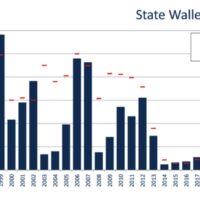I come and go on forums and social media, it all takes a fair bit of time and energy to respond to everything.
That was a long post, most of which does not warrant a response, but my name is on it so I’ll hit a few points.
1) As of 2025 we have an overage plan, it’s specifically designed to allow harvest and avoid closures. I’m confident in the current policy. No more all year catch and release regs like last year (I hope).
2) Its true the Bands will not allow a multiyear plan. I do not support this.
3) I hear often “it’s not based on science”. Which in my experience most sportsmen only believe science that fits their perception anyways but here goes:
The quotas are based on science, of course its a looser science than a velocity calculation in physics or something but it is based on science, it’s quite quantitative actually.
There are three metrics:
A year class strength index of ages 0 – 3
The fall gill net total poundage
The Statistical catch at age modeled adult biomass estimate,
the last one incorporates a ton of actual measured data
These metrics suggest an exploitation rate. Now here’s where there is some subjectivity. There is no strict formula to suggest an exploitation rate. I would love a scientifically rigorous exploitation rate formula. The FTC may develop one, but at the moment we don’t have one.
This year the quota is set at a 13% quota exploitation rate. An analysis done by a gifted retired DNR fisheries stats guru suggests that by using 13% there is a 98% unlikleyhood of over exploiting the walleye population. I like using 13%, it’s conservative but allows for significant harvest.
This year, the 13%, used in conjuncture with the new policies, I expect will result in the most total walleye harvest, and highest actual exploitation rate in over a decade (measured at the end of the season). This is something I plan to watch very closely over the next few years.
I expect this will be a great and busy season, good energies all around. I look forward to it.


